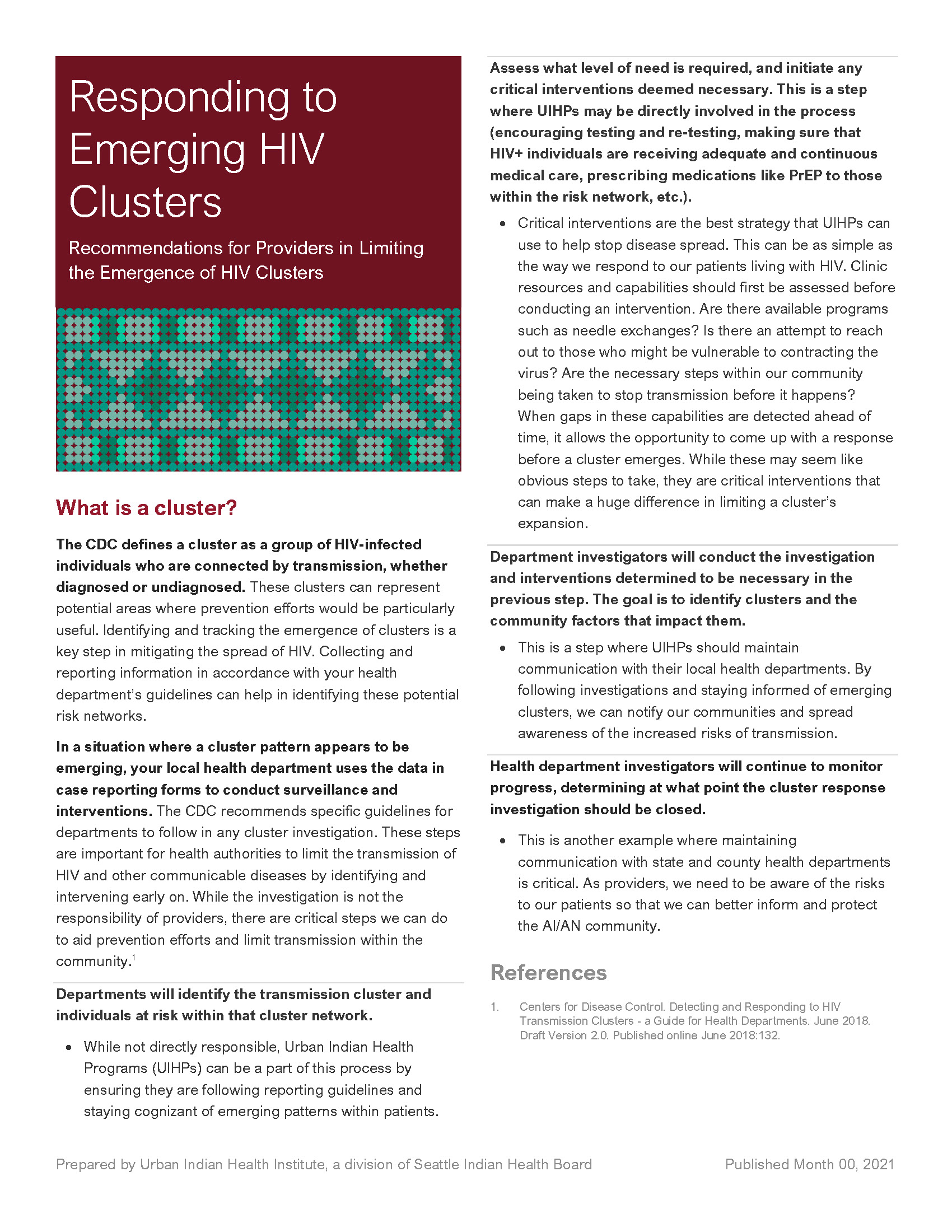What is a cluster?
The CDC defines a cluster as a group of HIV-infected individuals who are connected by transmission, whether diagnosed or undiagnosed. These clusters can represent potential areas where prevention efforts would be particularly useful. Identifying and tracking the emergence of clusters is a key step in mitigating the spread of HIV. Collecting and reporting information in accordance with your health department’s guidelines can help in identifying these potential risk networks.
In a situation where a cluster pattern appears to be emerging, your local health department uses the data in case reporting forms to conduct surveillance and interventions. The CDC recommends specific guidelines for departments to follow in any cluster investigation. These steps are important for health authorities to limit the transmission of HIV and other communicable diseases by identifying and intervening early on. While the investigation is not the responsibility of providers, there are critical steps we can do to aid prevention efforts and limit transmission within the community.
Departments will identify the transmission cluster and individuals at risk within that cluster network.
- While not directly responsible, Urban Indian Health Programs (UIHPs) can be a part of this process by ensuring they are following reporting guidelines and staying cognizant of emerging patterns within patients
Assess what level of need is required, and initiate any critical interventions deemed necessary. This is a step where UIHPs may be directly involved in the process (encouraging testing and re-testing, making sure that HIV+ individuals are receiving adequate and continuous medical care, prescribing medications like PrEP to those within the risk network, etc.).
- Critical interventions are the best strategy that UIHPs can use to help stop disease spread. This can be as simple as the way we respond to our patients living with HIV. Clinic resources and capabilities should first be assessed before conducting an intervention. Are there available programs such as needle exchanges? Is there an attempt to reach out to those who might be vulnerable to contracting the virus? Are the necessary steps within our community being taken to stop transmission before it happens? When gaps in these capabilities are detected ahead of time, it allows the opportunity to come up with a response before a cluster emerges. While these may seem like obvious steps to take, they are critical interventions that can make a huge difference in limiting a cluster’s expansion.
Department investigators will conduct the investigation and interventions determined to be necessary in the previous step. The goal is to identify clusters and the community factors that impact them.
- This is a step where UIHPs should maintain communication with their local health departments. By following investigations and staying informed of emerging clusters, we can notify our communities and spread awareness of the increased risks of transmission.
Health department investigators will continue to monitor progress, determining at what point the cluster response investigation should be closed.
- This is another example where maintaining communication with state and county health departments is critical. As providers, we need to be aware of the risks to our patients so that we can better inform and protect the AI/AN community.
References
- Centers for Disease Control. Detecting and Responding to HIV Transmission Clusters - a Guide for Health Departments. June 2018. Draft Version 2.0. Published online June 2018:132.

